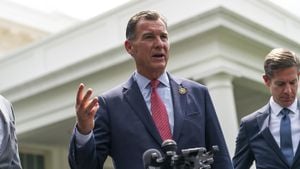The Florida panther, synonymous with the state’s wilderness and once teetering on the edge of extinction, is facing alarming threats once again as mortality rates hit historic highs. With 2024 already marking the death of 30 panthers, including five lost just within the last month, it’s clear this iconic species is battling severe challenges.
A 3½-year-old male panther was the latest casualty, discovered on November 22 after being struck by a vehicle on State Road 29, near Collier County, Florida. This incident marks the deadliest year for the Florida panther since 2018—a grim statistic as vehicular collisions are the leading cause of death for these endangered animals.
The Florida Fish and Wildlife Conservation Commission (FWC) reports troubling trends, confirming vehicle strikes accounted for 23 of the 30 panther deaths this year. The stark reality is compounded by the rapid development of south and central Florida, leading to more roads traversing through panther habitats, which makes interactions with vehicles dangerously commonplace.
Collier County alone has seen the majority of panther fatalities this year, reflecting broader issues of habitat loss due to urban sprawl. According to FWC officials, motorists are urged to exercise heightened caution, particularly in designated “panther zones” where the animals are known to cross busy roadways. Yet, conservationists argue for more than just awareness; they demand the construction of wildlife crossings to help these majestic creatures navigate their increasingly fragmented habitats.
The situation for Florida panthers is particularly dire as their population is estimated between 120 and 230 individuals, down from nearly double those numbers decades ago. Once abundant across the Southeast, these cats have dwindled due to hunting, habitat destruction, and low genetic diversity—a legacy of their near extinction. Despite intervention efforts, including the introduction of Texas pumas to bolster the gene pool, the threats remain prevalent.
Environmental advocates, like Elise Bennett from the Center for Biological Diversity, express deep concern over the continued development plans encroaching on the panthers' last habitats. She reflects on the urgent need for reforms: “With an onslaught of proposed developments, I sadly expect to see even more senseless deaths as traffic floods southwest Florida,” she asserts, highlighting the precarious balance between human expansion and wildlife conservation.
The troubling trend of panther fatalities from vehicular strikes can be traced back to the peak of 33 deaths recorded in 2016. Each new death draws the attention of wildlife officials and advocates alike, who recognize the impact urbanization has had on these solitary hunters. The introduction of new wildlife corridors and educating drivers on the need for speed reductions around panther habitats could be pivotal steps toward preventing future tragedies.
Interestingly, this year has also seen glimmers of hope. Earlier this year, wildlife biologists announced the birth of three panther kittens, highlighting the species’ resilience. These births are optimistic indicators of the panther population’s potential rebound, yet their survival hinges on immediate protective measures against the perils posed by growing traffic on highways and backroads alike.
ZooTampa’s senior vice president of zoological operations, Chris Massaro, emphasizes the need for coexistence: “We have to share this beautiful state with its incredible wildlife.” Finding ways to do this effectively is the challenge at hand, as safe crossings and education may not suffice when juxtaposed with urgent development projects threatening their territory.
The FWC's call for safer roads and increased wildlife awareness is resounding, but as advocates stress, without significant changes and immediate actions addressing habitat loss, the future of the Florida panther hangs precariously by the thread. Their fate, entwined with the choices made today, ignites the conversation about the balance of human expansion with the preservation of endangered wildlife.



